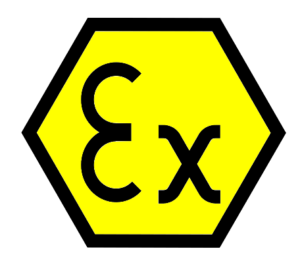
Equipment for potentially explosive atmospheres (ATEX)
A potentially explosive atmosphere exists when a mixture of air gases, vapours, mists, or dusts combine in a way that can ignite under certain operating conditions.
Equipment and protective systems intended for use in potentially explosive atmospheres (ATEX) cover a range of products, including those used on fixed offshore platforms, petrochemical plants, mines, and flour mills, amongst others.
In Europe
The ATEX Directive 2014/34/EU covers equipment and protective systems intended for use in potentially explosive atmospheres. The directive defines the essential health and safety requirements and conformity assessment procedures, to be applied before products are placed on the EU market.
In North America (USA & Canada)
The HAZLOC certification primarily concerns North America. It aims to control the risks related to explosion in certain environments. It comprises two elements:
- testing and evaluation of products being used
- inspection of the factory
Top reasons to put your confidence in Testups for your Atex or HazLoc testing, inspecting, and certification services:
- Proven experience: We are cooperating with recognized agencies around the world as a leading issuer of HazLoc certificates, including ATEX and IECEx.
- Fast and predictable service: We’ll help you gain rapid access to global markets with local Atex, IECEx and HazLoc experts that can help you launch your product quickly.
- Unmatched expertise: We are cooperating with the teams of highly experienced Atex and HazLoc professionals committed to helping you meet your timeline to market.
- Global resources: Benefit from our partners investments in state-of-the-art facilities and expert staff worldwide, including North America, Europe, Asia and Middle-East.
- Comprehensive training: Flexible training options that include personnel certification and basic overview courses on the certification process, ATEX and IECEx requirements, and EN/IEC electrical and mechanical standards
